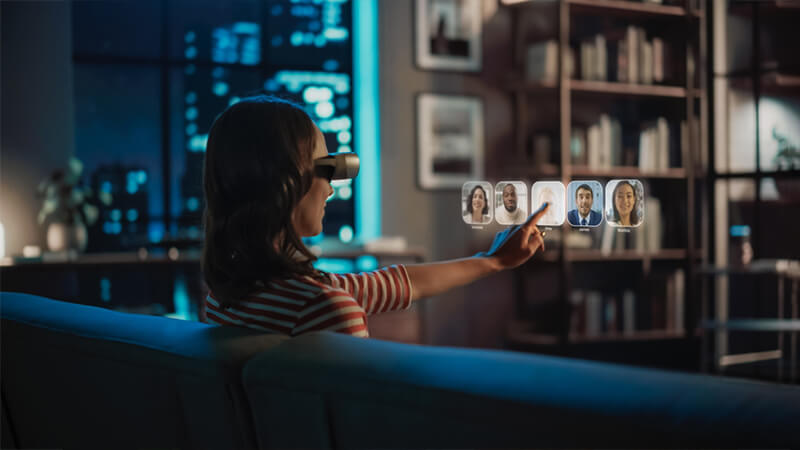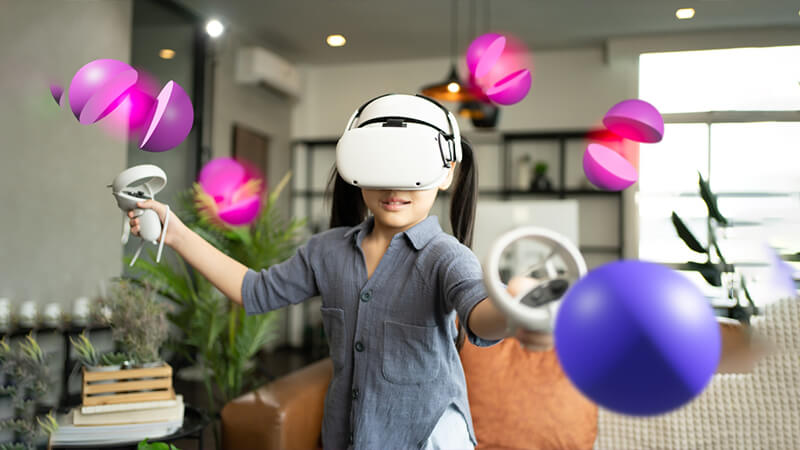The advent of digital technology has forever changed the face of communication and social interaction. From the emergence of email to the rise of social media, the world has witnessed an impressive evolution of communication methods. In recent times, augmented reality (AR) and virtual reality (VR) are steadily transforming social media platforms, paving the way for a new era of virtual socialization. This article will delve into the growing influence of AR/VR on social media platforms, highlighting the human-centric aspects of this transformative trend.
The Dawn of AR/VR
AR and VR technologies have increasingly gained traction for their capacity to offer immersive experiences that transcend the confines of physical reality. AR, by overlaying digital content onto the real world, and VR, by plunging users into a fully virtual environment, have both found their way into various fields ranging from gaming to education and, more recently, social media.
AR/VR in Social Media: The Current Landscape
Today, social media platforms have begun to integrate AR and VR to offer unique, interactive experiences to their users. Snapchat was one of the first to introduce AR filters, transforming simple selfies into creative expressions. Facebook followed suit with Spark AR, allowing users to create and share their interactive AR experiences. On the VR front, platforms like Facebook’s Horizon and VRChat have emerged, enabling users to engage with others in a wholly immersive virtual environment.
These features allow users not only to interact more closely with digital content but also to establish deeper connections with others despite geographical limitations. They represent a shift from passive content consumption to active participation, amplifying the human elements in digital communication.
The Human Touch in Virtual Socialization
While the use of AR/VR in social media brings about new levels of interaction and engagement, what stands out is how these technologies have been designed with a strong focus on the human experience.
AR filters and VR spaces are typically designed to mirror human emotions and actions, translating smiles, nods, and hand gestures into digital signals. This attention to human behaviors allows these technologies to generate immersive experiences that feel natural and intuitive, contributing to their widespread acceptance.
Moreover, virtual socialization enables individuals to maintain social connections in situations where physical contact may not be possible – an aspect that gained particular relevance during the COVID-19 pandemic. People turned to AR/VR social platforms for everything from casual meet-ups to business meetings, preserving a sense of community and togetherness amidst global isolation.
Future Implications
As AR/VR technologies continue to evolve, their influence on social media platforms is expected to grow. The next wave of innovation could include more interactive and personalized AR filters, more sophisticated VR social platforms, and possibly even the integration of artificial intelligence to further enhance the user experience.
While these advancements promise exciting possibilities, it’s crucial to remember the role of ethics and privacy. As we tread further into the realm of virtual socialization, we must address questions about data protection, cyberbullying, and the potential for addiction to ensure a safe and inclusive digital environment.
In conclusion, The rise of AR/VR in social media signifies a pivotal moment in the history of digital communication. These technologies, while reshaping the way we interact online, are reinforcing the human elements of socialization, fostering deeper connections and more engaging interactions. As we continue to explore the potential of virtual socialization, let us embrace this transformative journey, ensuring it brings us closer as a global community rather than pulling us apart.
As we look forward to the future, it is not just about technological progression; it’s about enriching human interaction, sustaining relationships, and nurturing a global community. In essence, it’s about making our digital experiences more ‘human.’ Welcome to the era of virtual socialization!



